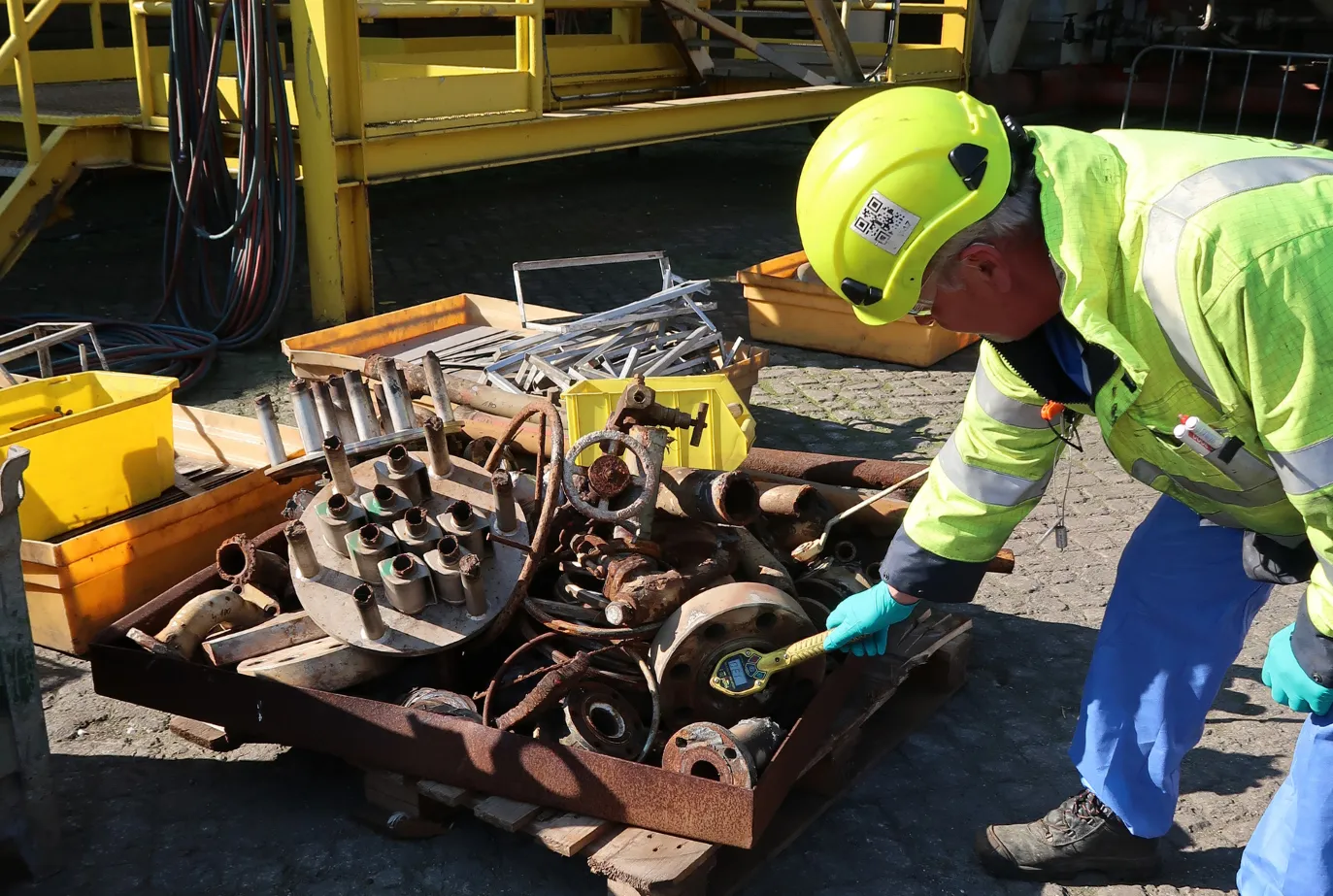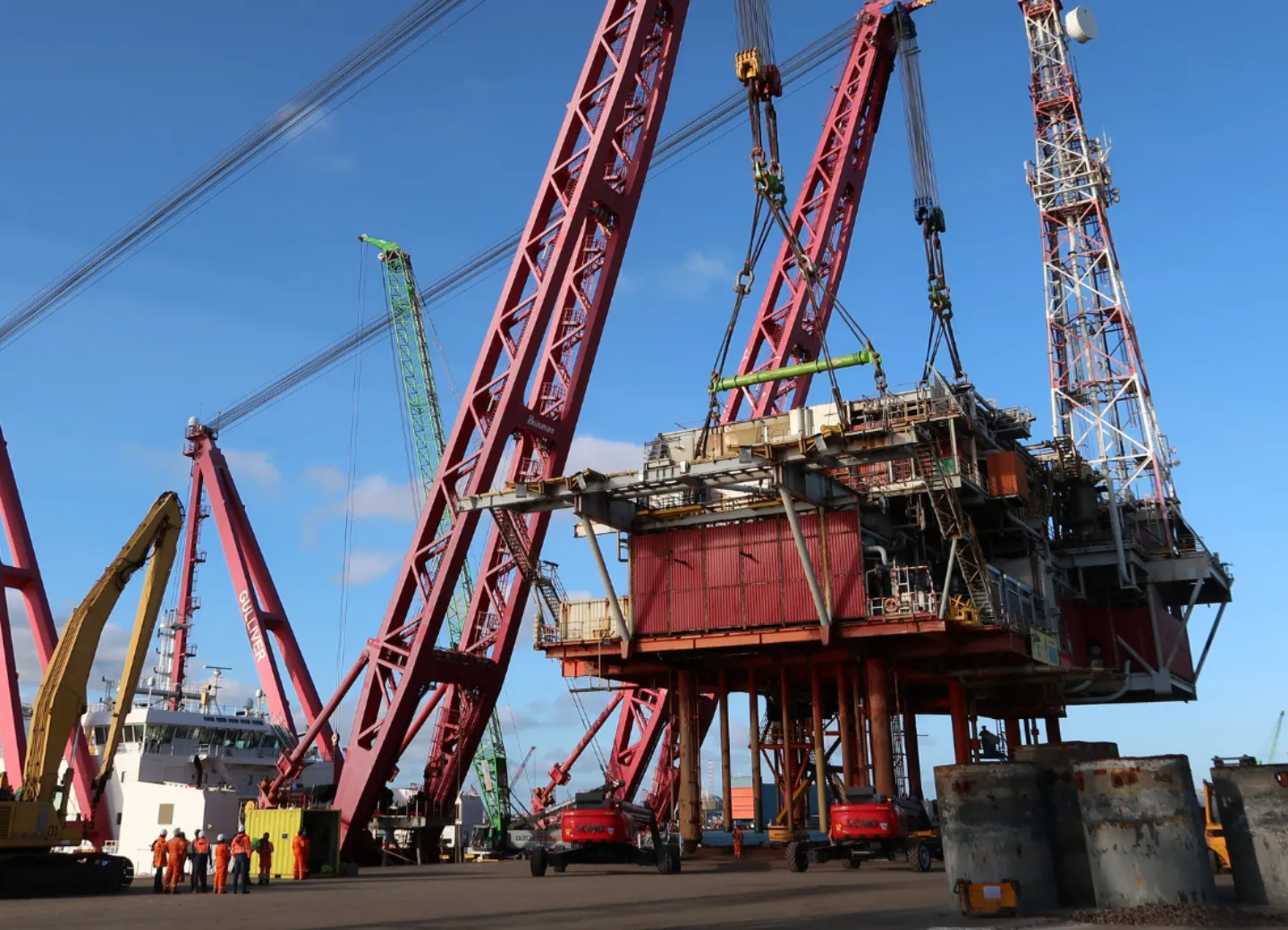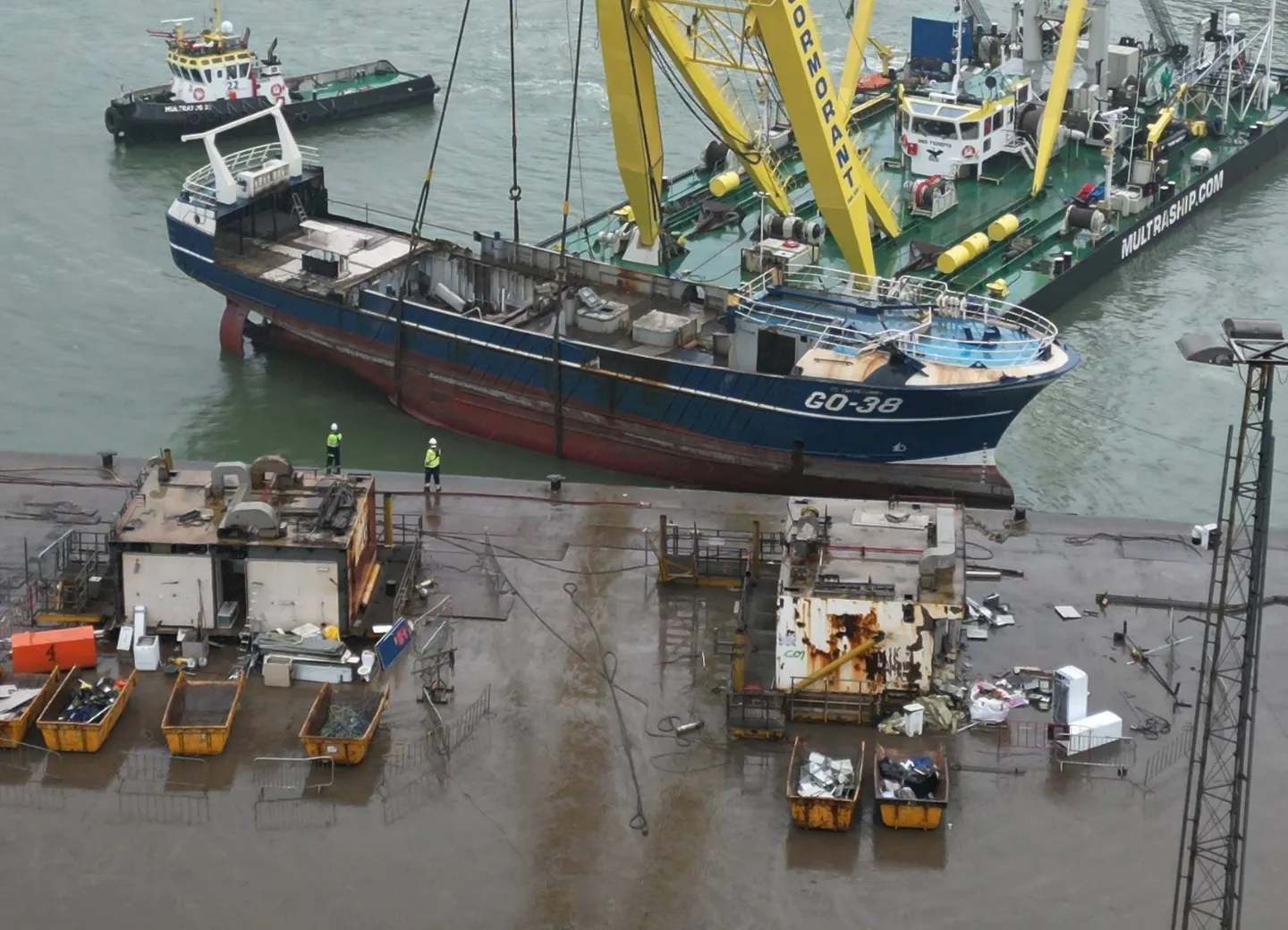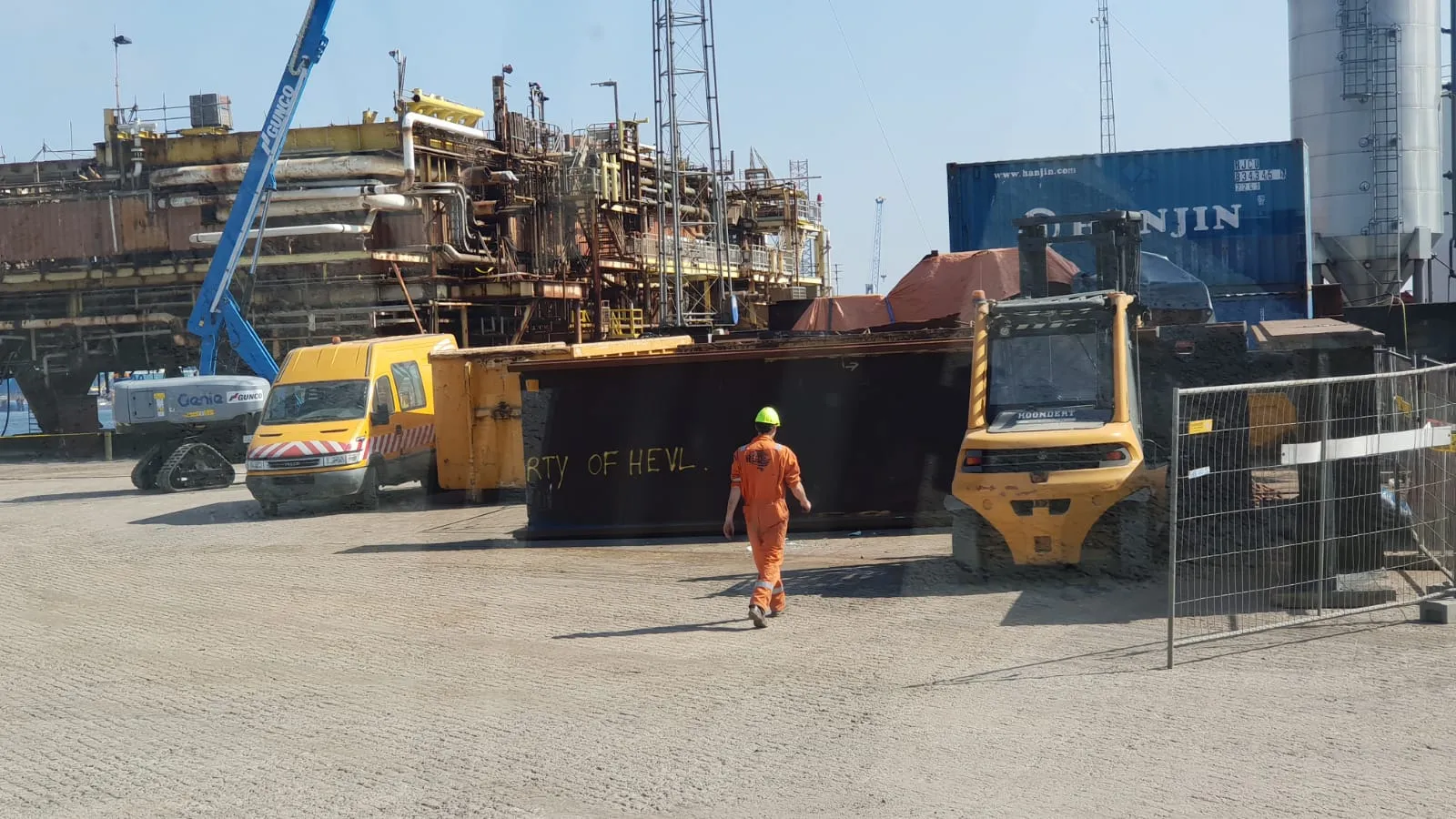
NORM
NORM (Naturally Occurring Radioactive Material) is a frequent occurring phenomenon on offshore platforms. Because of its radioactive nature NORM is a challenge that HSD made one of their focal points. HSD is fully licensed and equipped to decontaminate NORM process installations and manage the radioactive waste. HSD operates a dedicated area on the yard to clean piping, valves and process vessels and handle sludges and scale. After decontamination the process installation can safely be recycled as regular scrap and the radioactive waste is taken to highly specialized facilities.

TFS regulations
With a yard directly on the Dutch North Sea, HSD does not have to limit itself to Dutch projects. Our yard is easily accessible for all projects around the North Sea and even beyond. Projects from outside the Netherlands are subject to the transfrontier shipment of waste regulations (TFS) i.e. Regulation (EC) 1013/2006. HSD is very experienced in the application procedure and can provide extensive support to our clients. Without any reservations it can be stated that the TFS is not an obstacle to take foreign projects to HSD.

Ship recycling
The decommissioning approach for ships is highly regulated through Regulation (EU) 1257/2013. HSD’s yard is licensed according to this regulation and therefore is recognized as a ship recycling facility.
